Turtles are reptile organisms, which are often confused with being the tortoise or the terrapins. They exhibit distinctive adaptive traits such as an interiorly overgrown hard shell from their ribs which forms a part of their vertebral column that protects them from predation.
Additionally, they have flippers, streamlined bodies, and webbed feet to adapt to living in an aquatic environment. These two traits distinguish them from the other reptile order: the tortoise, which lives in the dry land, and the toppings, which partially live on dry land and swampy-like environment.
Turtles are taxonomic classification belongs to order chlenolia alternatively known as the Testudines, which has the Cryptodira and Pleurodira sub-orders.
Turtles exist in up to 300 species, which are considered primitive and widely adapted to live in nearly all continents in both marines and freshwater environments.
Aquatic turtles tend to live in freshwater environments which encompass lakes and ponds.
1. Painted turtle
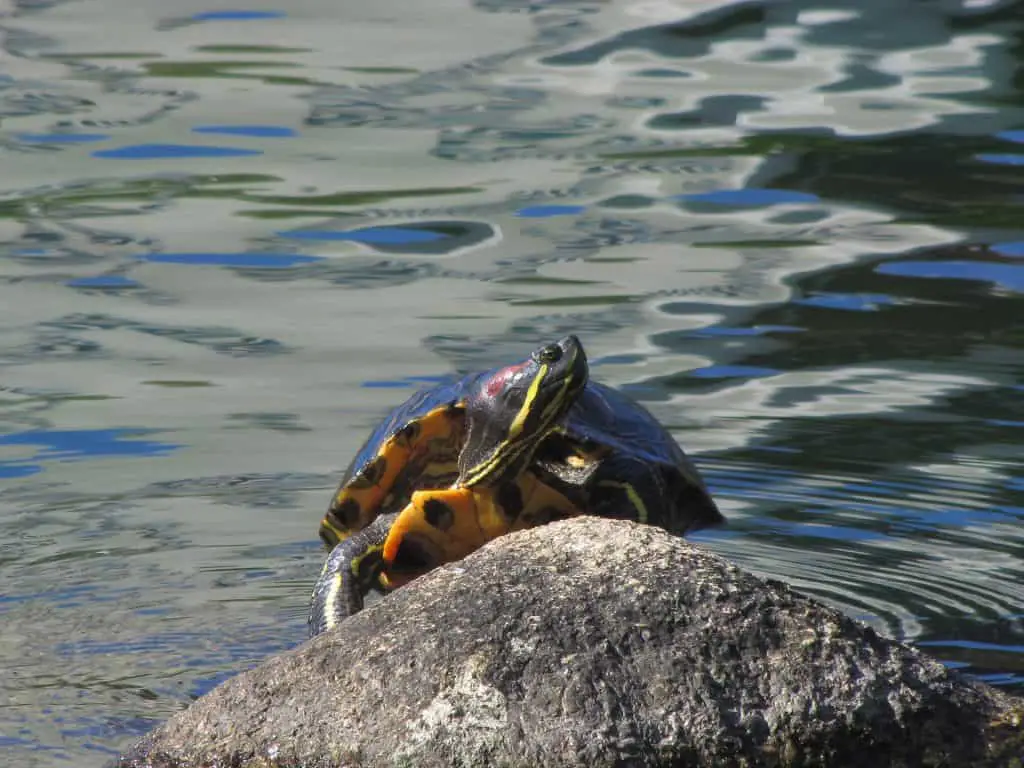
- COMMON NAMES: painted turtle
- Family: Emydidae
- Genus (scientific name): Chrysemys
- Trinomial name: Chrysemys picta ssp and C. dorsalis
- Type: aquatic
- Average size: (10-18 cm)
- Lifespan: 25-30years Popular Locations: North America (Canada and Northern Mexico)
Painted turtles are one of the most beautiful varieties of pond turtles of the native North American boundaries. Their range extends from the coast of the Atlantic Ocean to the coast of the Pacific Ocean from northern Mexico to Canada, thus being one of the most widespread turtles species.
Besides, their intense coloration also makes them one of the most identifiable and the most encountered species. Though their native ranges vary from one location to another, their captive care needs and habits are alike.
In addition, they breed readily in captivity, and turtle farms frequently produce them compared to the other species of turtle family.
Compared with the other temperate species, the painted turtles’ mating and breeding season are restricted to two seasons, summer and spring, and thus, the captive bred babies are accessible from May to September.
Though many babies are hatched every year, the prices of these species are very affordable compared to other species in the temperate region.
The other appealing aspect of the painted turtles besides the coloration is the manageable size of the adult turtle, which rarely exceeds 8 inches in length.
The males do not usually get to be big compared to the females; however, their size difference is insignificant. Since they are able and active swimmers, the petting farms should provide spacious tanks or ponds.
A juvenile painted turtle should be provided with at least 10 gallons of water, and this translates that a minimum of 15 gallons or 20-gallon tanks filled with 10 gallons of water is the best for this species.
Besides, they are omnivorous; however, they consume both plant and animal matter with equal enthusiasm. The animal matter may include; worms, insects, and fish, while plant matter includes aquatic plants such as water hyacinth, duckweed, and lettuce.
In addition, they are not tamed animals that may prosper on human contact and affection; thus, no one should handle them except as a matter of necessity.
However, despite the contrary appearances, handling them is quite stressful since individuals are subject to scratches and bites by the turtles.
2. Peninsula Turtle (Pseudemys peninsularis)
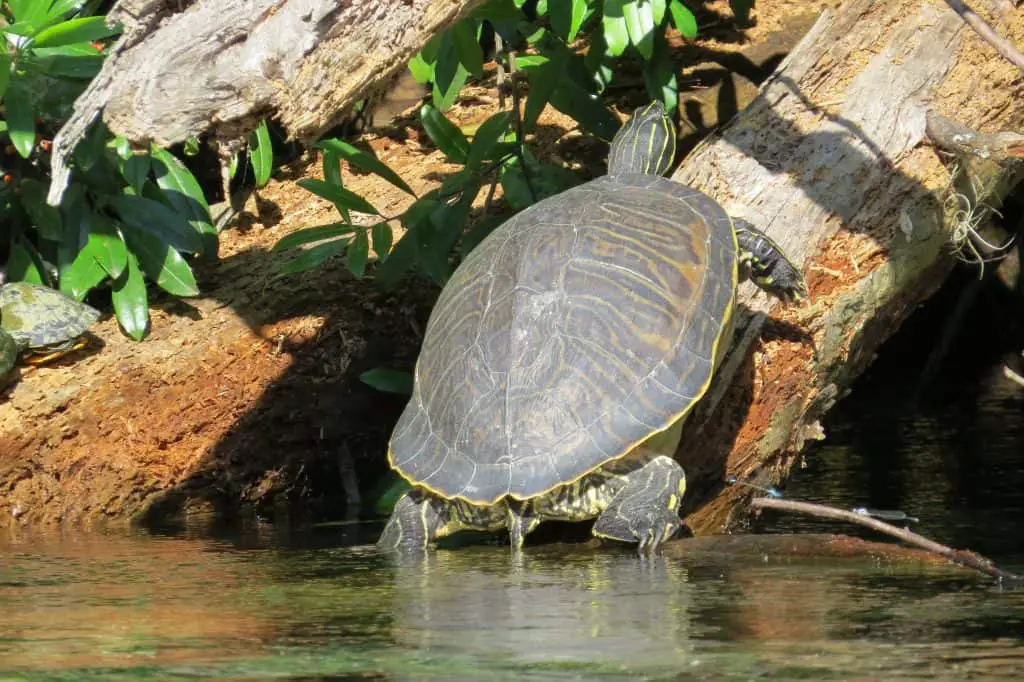
- COMMON NAMES: peninsula turtle
- Family: Emydidae
- Genus (scientific name): Pseudemys
- Trinomial name: Pseudemys peninsularis
- Type: aquatic
- Average Size: 9-13in (23-33 cm)
- Lifespan: 30+ years
- Popular Locations: north of Florida peninsula
Peninsula Turtle is one of the admirable and beautiful turtle species which adapts quite fast and well to life in captivity. Similar looking to the river Cooter, the peninsula turtles prefer lax lifestyles in slow and moving waters.
They are also sizable and require well-designed habitats to truly thrive since they spend time both in water and land. Caring for the peninsula Cooter allows the owner to create a beautiful display.
Though mostly confused to the endemic species of turtles across Florida, the peninsula turtle has distinct physical features; for instance, the shape of the shell is relatively shallow at the perimeter edge, and the scutes towards the center of the shell are taller, which creates a unique ridge-like shape and a steep curve as well.
For the color, the Cooter is covered in light green, yellow and olive green. The top of the shell has concentric markings in alternating colors, while the bottom of the Cooter is typically solid tan or yellow.
Besides, the legs and head are both covered in the same colors; however, the lines are parallel and vertical. The feet are also fit for the reptile’s lifestyle since they have sharp claws that help them provide traction as they dig through the dirt.
Compared to other species, the peninsula turtle is ideal for turtle enthusiasts since it is not too difficult to take care of since they are naturally tough and happily live in solitary environments.
There are a couple of ways to create an ideal environment for the peninsula Cooter for potential pet keepers. For instance, the first is creating a full semi-aquatic habitat with a paludarium.
Using fine smooth gravel or sand, create the bed of the portion of water and then create a slope up to dry the basking area. Though this approach takes much heavy planning and more workload, it is the most authentic.
3. Razorback musk turtle
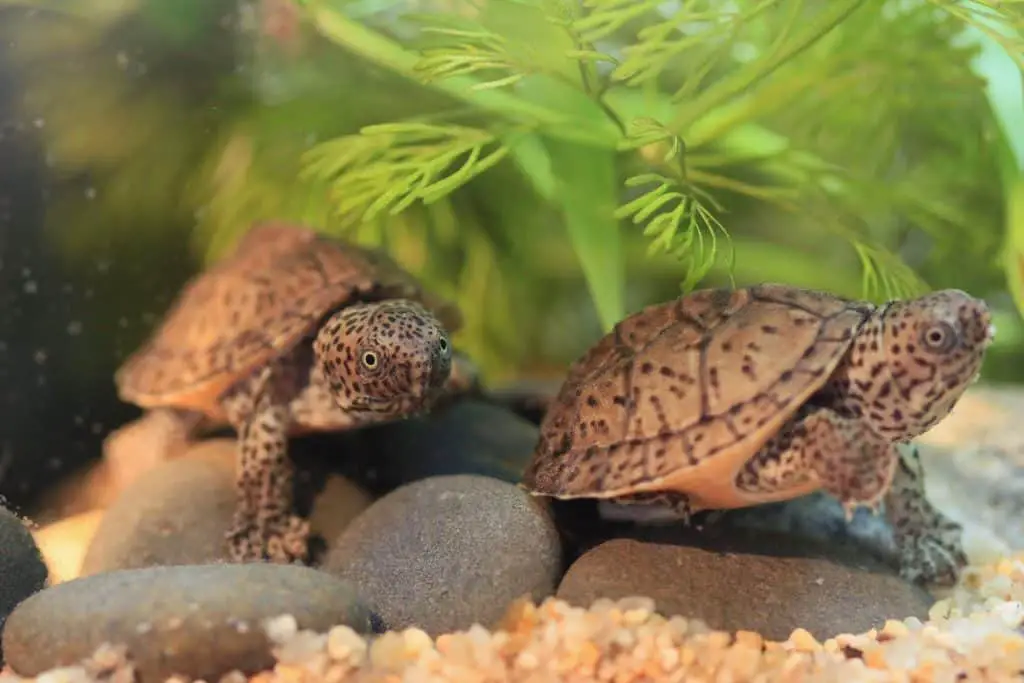
- COMMON NAMES: razorback musk turtle
- Family: Kinosternidae
- Genus (scientific name): Sternotherus
- Trinomial Name: Sternotherus carinatus
- Type: aquatic
- Average Size: 5-6in (12-15 cm)
- Lifespan: 20-50 years
- Popular Locations: southeast Oklahoma, east Texas, Arkansas, and Louisiana.
Razorback musk turtle is one of the biggest types of the musk turtle family. It is a species that is entirely aquatic; however, it comes out of the water to bask occasionally compared to other species of turtles.
Since they walk at the bottom of their rearing or petting tank, they are delightful to watch. They are found in different states such as Oklahoma, Mississippi, Texas, Louisiana, and Texas.
Besides, they prefer slow-moving rivers and swamps though they can also be found in shallow ponds and streams with much vegetation. In terms of color, the razorback musk turtles show a cream or tan color with brown spots on the body and shell.
As they develop to maturity, their shell starts darkening into a brown color, and as a result, there will be darker rings around the scutes. The body will, as a result, turn into great color, and there will be spots on the head and the legs.
The razorback musk turtles feature a large bulbous head and long neck. Besides, they have a noticeably sharp beak along with short webbed legs.
They have a sharp keel that runs down from the center of the shell and to the whole length of their shells. It is the keel that gives this turtle breed the name.
For pet keepers, since the razorback musk turtle spends most of its time underwater, the pet keeper will be required to provide it an exposure that has enough water for the pet where it can completely submerge, walk and swim around the bottom of the pet tank.
Though they do not hold a behavior of basking frequently, one will need to set up a basking site with complete UV light and heat lamp in the pet tank; however, rocks can also be used as basking sites.
Compared to the other species, the razorback is one of the shyest in the musk turtles family and the turtles family.
Though they are not the type of turtles that bite, they should be handled carefully and necessary. In addition, they can be housed with other types of pets such as Cooters, painted turtles, and sliders.
4. Caspian pond turtle
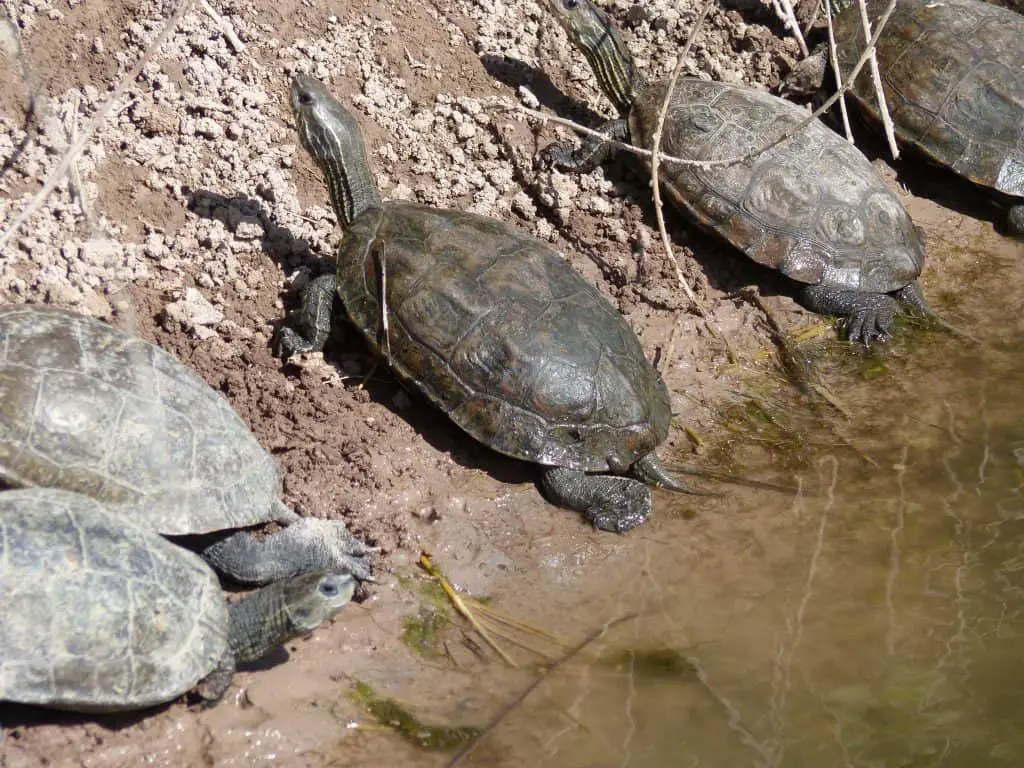
- COMMON NAMES: Caspian Pond turtle
- Family: Geoemydidae
- Genus (scientific name): mauremys
- Trinomial Name: mauremys capsica
- Type: aquatic
- Average Size: 7-9in (25 cm)
- Lifespan: 15-50 years
- Popular Locations: Iran, Saudi Arabia, Eastern Europe, cypress, Bulgaria
Caspian pond turtle Also referred to as the Caspian turtle, Caspian turtles’ global and wild population has decreased significantly over the past years due to stork, vulture, and human interactions.
They are also a fast-growing breed of turtles, and as a result, they need a lot of space and room. Thus they are not suitable for pets for individuals who are too busy or have tight schedules.
Besides being found in multiple states, these turtles are versatile and active and thus are available in limited numbers in various states, including Iran, Saudi Arabia, Eastern Europe, cypress, Bulgaria, and Yugoslavia.
The Caspian pond turtles are highly adaptable and resilient since, in the many freshwaters and brackish bodies of water, they can also become dormant in the mud during the summers or hibernate during the summers winters instance, ones found in the northern regions.
In addition, they feature a smooth and smooth oval carapace which can be tan, olive, or black.
However, their bodies might also have marks of yellow or cream-colored lines. The Caspian pond turtles breed in the early spring season; however, they might breed in autumn since nesting typically happens from June to July.
In each clutch, they lay an average of four to six eggs, and the eggs are elongated, white, and brittle shelled. Once the hatchlings are out, they feature carapaces that are roughly 33mm long and round.
The juvenile turtles are carnivorous at the early ages; however, as they grow, they gradually shift to being omnivorous.
For pet keepers, it is okay to keep these types of turtles in an aquarium without anything at the bottom since the gravel might end up trapping dirt or too much waste and food, or it might end up being swallowed by the turtles.
However, just like other breeds, it will require a dry surface for resting and basking.
In terms of behavior, while they enjoy basking, they will dive into the water quickly if they are frightened. However, unlike other breeds as well, they can be domesticated since they eventually recognize their caretakers.
For instance, it might beg for a snack once it recognizes the caretaker. However, just like other turtles, it does not enjoy being held since it can bite once they are shocked or frightened.
5. African Sideneck Turtle
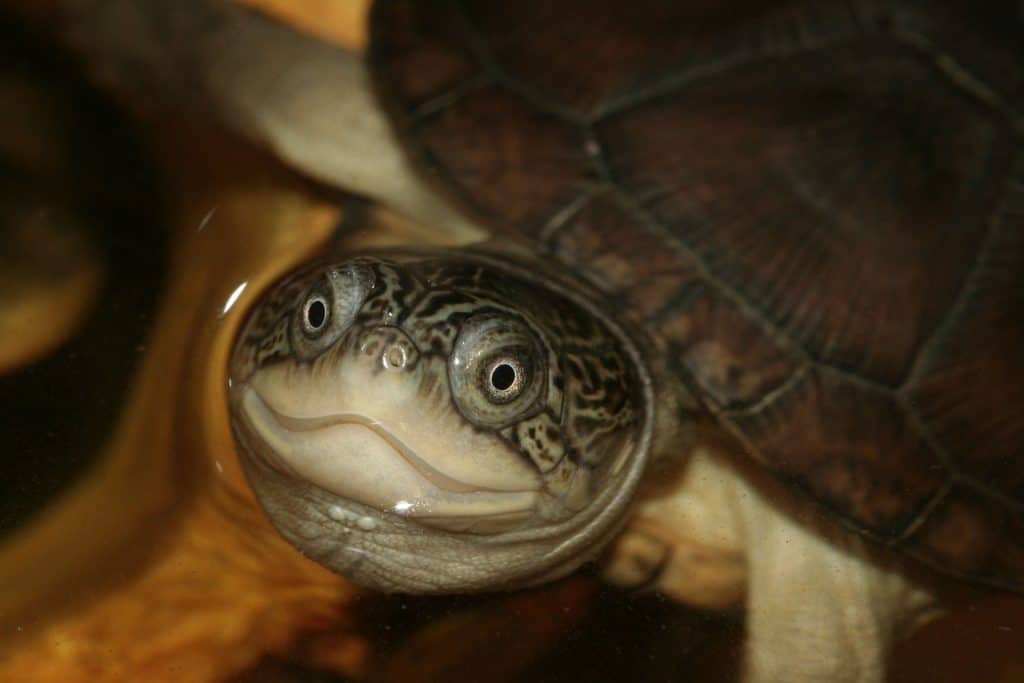
- COMMON NAMES: African side neck turtle
- Family: chelidae
- Genus (scientific name): pleurodira
- Trinomial Name: Pelusios castaneus
- Type: aquatic
- Average Size: 7-12in
- Lifespan: 50+ years
- Popular Locations: Sierra Leone, Congo, Liberia, Senegal, Guinea, and Angola.
More like the African helmeted turtle, the African side neck turtle gains its name due to its incapability to withdraw its heads into shells instead of drawing its heads to the side and under the upper edges of their shells.
They can range an adult size of between 7.2 and 12 inches, with the females reaching a greater size than their male partners. Besides, the male side necks also grow to reach a maximum measurement of about 10inches.
Under proper care and management, the African side neck turtles can easily live for five decades in captivity. However, they are typically dark-colored, and their bellies have a grayish coloring with a wide and poorly defined yellow area.
They also have olive to brown heads with black markings on top and two barbels that protrude from the lower jaw. They also have slightly webbed feet and long sharp claws.
Unlike other species found all over the globe, the African side neck species hold serious reptilian features though its face can be described as cute with a mouth that is fixed into smiling big round eyes.
Compared to other species, the environmental requisitions for this moderate-sized and long life span African turtle are intermediate or advanced since they are hardy; thus, they can withstand all the periods of deprivation.
Hatchlings feed on insects and protein content in their habitats, making them more carnivorous. However, once they grow, they seem to lose the carnivorous tendencies and adopt omnivorous diets.
Depending on the local climate of the pet keepers, the African side neck turtles should be kept outside or indoors since they do not hide as some species; thus, they should be kept outside when the temperatures are warm and favorable.
They are found in states such as; Sierra Leone, Congo, Liberia, Senegal, Guinea, and Angola.
6. Trachemys Scripta
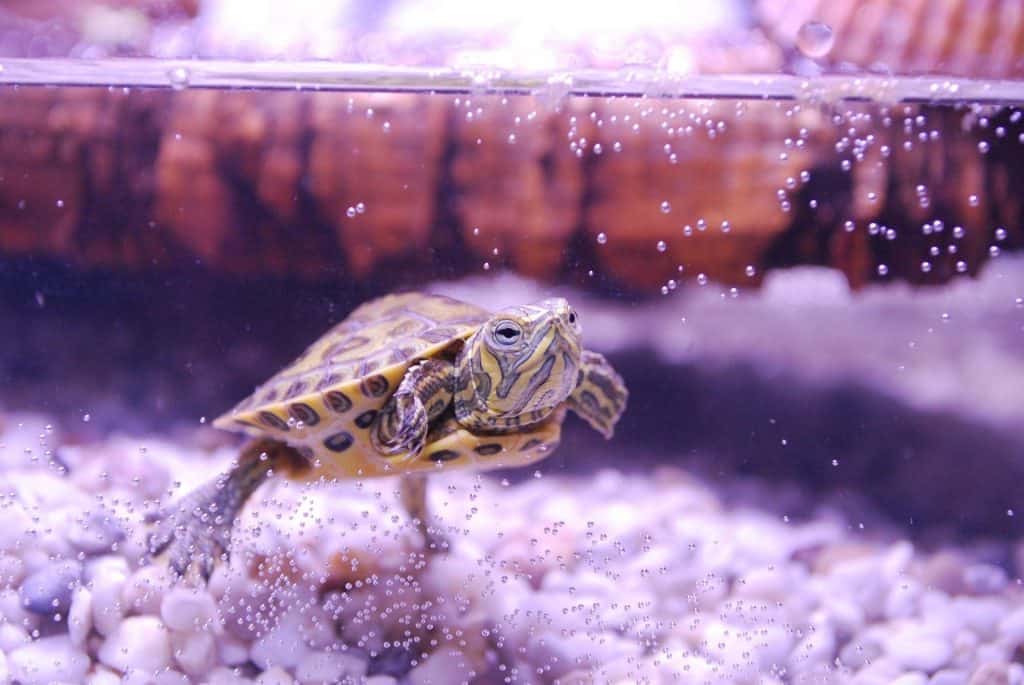
- COMMON NAMES: pond sliders
- Family: Emydidae
- Genus (scientific name): Trachemys
- Trinomial name: Trachemys scripta
- Type: Aquatic
- Average size: 15 – 20 cm (6- 8 in).
- Lifespan: 20-50 years
- Popular Locations: south-central and the southeastern United States and northern Mexico
Commonly referred to as pond sliders. It is a common type of semi-aquatic turtle species classified as medium-sized and highly invasive and outcompetes native species for food and space to live.
This species of turtle is often found in the ponds environments and is well adapted to both water and land habitat. They are majorly reared in large ponds and traded at international markets as pets.
It exists in three sub-species: Cumberland, yellow-bellied and red-eared sliders scientifically known as T. s. troostii, T. s. scripta, and T. s. elegans, respectively.
As they grow old, the three subspecies of the sliders grow old, the distinctive colors of their shells fade to black. Furthermore, it is essential to note that the female slides are differentiated from the male ones by their phenotypically short and slender tail and short front claws compared to the male Pond sliders.
Besides, pond sliders are more often found in groups displaying their social nature, unlike other species of turtles. These groups might sometimes be quite large when the turtles are out to bask on branches and shores of ponds or lakes.
The pond sliders communicate with one another through distinctive features such as vibrations, eye-rolling, and touch when sending signals to their families or other turtles.
When underwater, they wave their claws, causing vibrations that touch one another’s faces, thus getting the attention. Besides, the pond sliders are polygynandrous or promiscuous since both the male and females have multiple partners, and their breeding season occurs from April to October.
The females lay 1-2 clutches per annum with a range of 6-20 eggs per clutch.
After laying the eggs, they are incubated for 60-90 days before the hatchlings are produced; however, some hatchlings may stay in the eggshell for 1-2 days before they maneuver to their independent lives.
Over the years, the population of the pond slider has decreased significantly due to degradation of their habitats, road mortality, pesticides, and heavy metals. The collection of pets has also impacted the population size greatly.
7. Pseudemys concinna
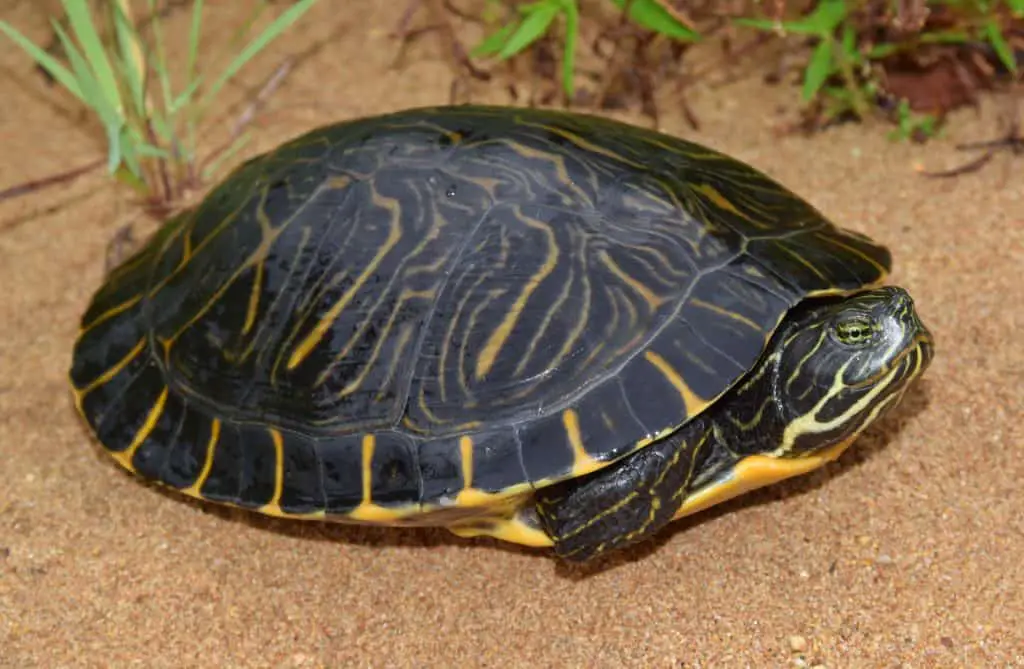
- Family: Emydidae
- Genus (scientific name): Pseudemys
- Trinomial name: Pseudemys concinna
- Other Names: River cooters
- Type: Aquatic
- Average size: (23-33 cm)
- Lifespan: 40years Popular
- Locations: WestVirginia, Virginia, Texas, Tennessee, South Carolina, Pennsylvania, Oklahoma.
It is a species of freshwater turtles which are native to the easter and central parts of the united states of America.
They are relatively large, and their upper shells tend to be typically dark greenish-brown – dark typically with markings on the posterior, the bottoms shell of the turtle species is reddish-orange to yellow with dark patterns.
The female turtles tend to grow bigger than the males, and they have smaller tails and convex plastrons. The idiosyncratic feature of these types of turtles is that they hold the ability to breathe underwater through the cloaca bursae, which is on their tails.
This allows them also live underwater for an extended period, thus making it hard and tedious to handle as well as study their behavior. Their reproductive maturity is attained at the age of six years among the females and thirteen years among the males.
The duration of nesting, however, depends on the location of the nesting sites.
For instance, in warm and temperate locations, the nesting period tends to be shorter than cooler regions where the hatchlings may have to overwinter in the nests to avoid the harsh temperatures.
Since the female river cooters can hold the fertilized eggs for a long period, the gestation period varies from 10moths to up to 2years as they search for the best nesting place for their young ones.
Depending on the size of the mother, the size of the eggs may vary. During hibernation, the river cooters can stay underwater for a minimum of two months without making any trips to the surface.
Besides, they are skittish since they tend to remain in the water, except for nesting and basking.
They spend much of their time submerged and resting on the substrate or moving about in search of food.
Additionally, they are predominantly herbivorous since they feed on aquatic vegetation while adults and the juveniles occasionally consume crayfish; however, the juveniles do more than the adults.
8. Reeves’s turtle
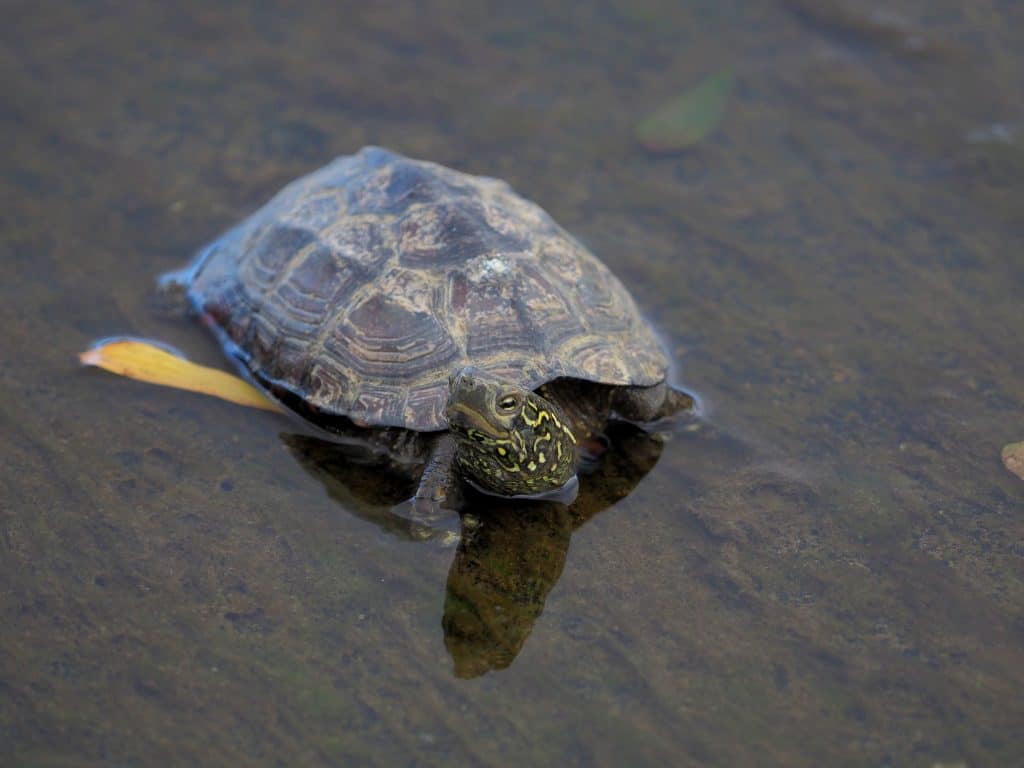
- Family: Geoemydidae
- Genus (scientific name): Mauremys
- Trinomial Name: mauremys reevesii
- Other Names: River cooters
- Type: Aquatic
- Average size: (23-33 cm)
- Lifespan: 10-20+ years
- Location: Japan, Taiwan, south and north Korea, and eastern China.
Reeves’s turtle holds diverse distinct morphological forms; the reeve’s turtles’ habits and requisitions are similar to other species of turtles.
It is one of the smallest members of the genus mauremys, which is one of the main global genera of the old turtle family Geomydidae. Besides, they readily breed in incarceration and are regularly produced by hobbyists and farm turtles.
Compared with the most temperate species, the reeves turtle breeding is restricted to two seasons summer and spring. The captive-bred babies are accessible from May to September; however, many babies have been produced annually and are available year-round.
Besides their charming personalities, such as the manageable size of the adults rarely exceeds 9 inches, while most specimens do not exceed more than 6 inches.
They also live for over two decades in captivity; thus, they can be truly long companions to individuals who wish to rare them as pets. They can also be readily housed due to their adaptable nature.
They can also be maintained indoors since they need protection from predators. Reeves turtles are omnivorous since they eat both plant and animal matter with equal enthusiasm.
In addition, they are not tamed animals that flourish on human contact and affection; thus, they should not be unnecessarily handled except as a matter of necessity.
Despite the appearances to the contrary, management is stressful since the handlers are subject to bites and scratches by the turtles.

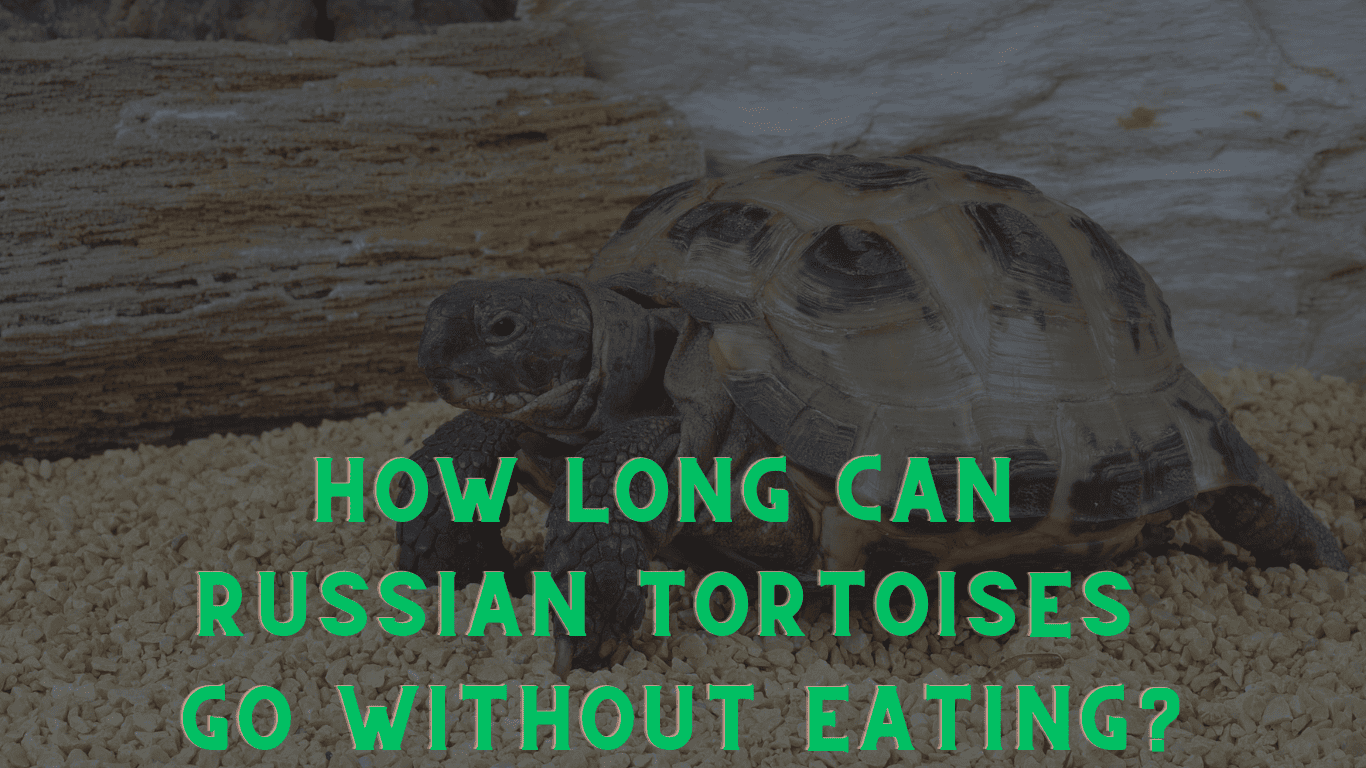
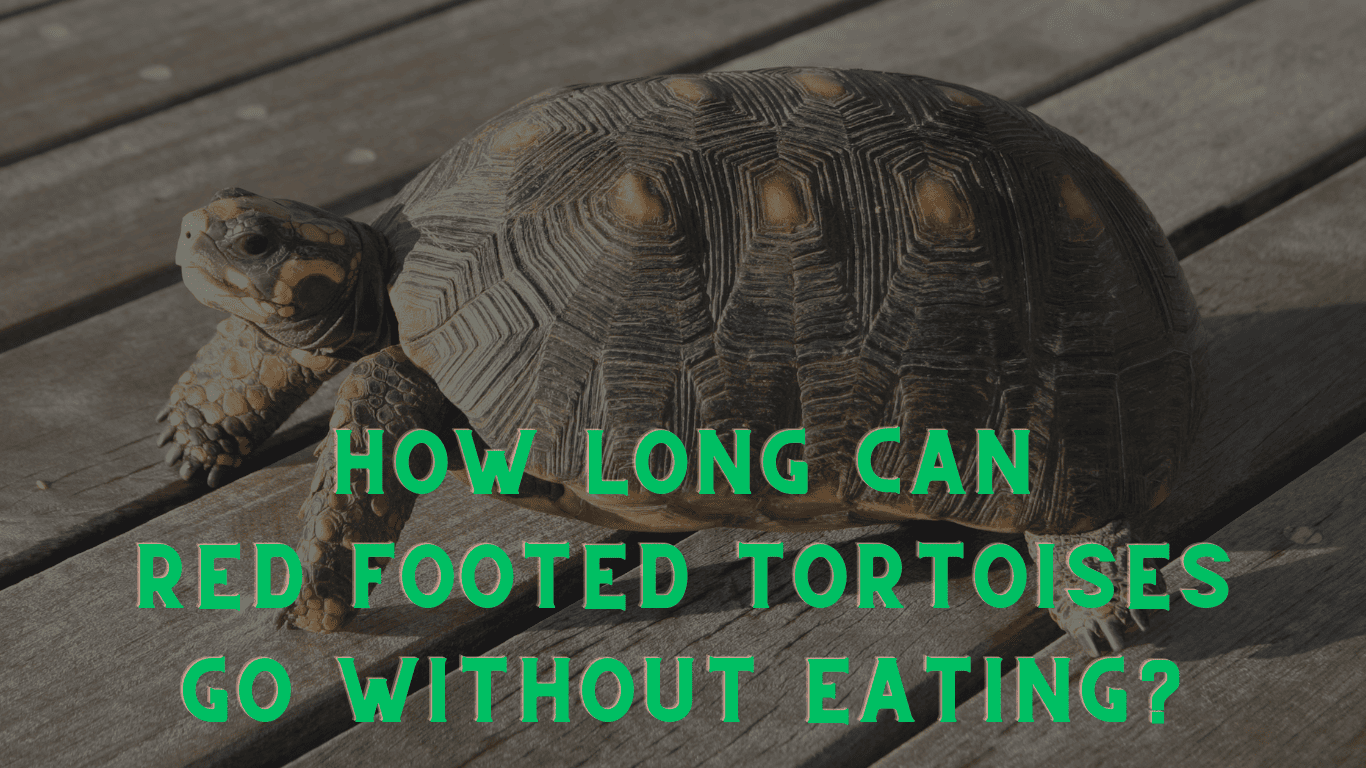

Leave a Reply